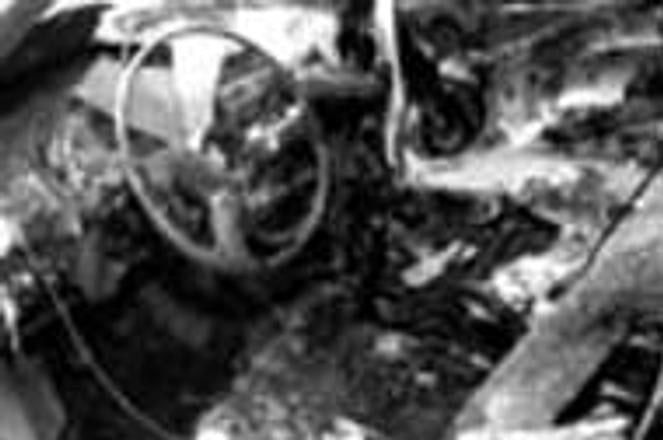Police say Mafia groups murdered 45 people in Slovakia in 1998.photo: TASR
Slovakia experienced a considerable increase in violent, property, and economic crime in 1998, according to a report on the security situation in Slovakia discussed by the Parliamentary Committee for Human Rights and Nationalities in Bratislava on April 21.
A total of 12,247 violent crimes were registered in Slovakia in 1998. Of these, 2,159 were committed with guns while explosives were the weapon of choice in 35 cases.
Of the 128 murders cases for the year, most of which were committed in the Košice and Nitra regions, 99 were solved. Approximately 3,639 burglary crimes were committed, mainly in the Bratislava region, while police recorded a 43.4% success-ratio in resolving them.
Mafia activity in Slovakia has also been on the rise during recent years. About 45 of the 128 murders last year were committed by members of organized crime, with 29 of the victims being affiliated with other organized crime groups. A Prievidza-based group was responsible for the highest number of deaths, accounting for 14 murders in 1998 followed by a Banská Bystrica group with 13 murders. Recent highly publicised criminal acts such as the mass murder of 10 Mafia members in Dunajská Streda have underlined the rise in mob crime.
In light of the organised crime proliferation, citizens have complained that the Mafia is to blame for the increased crime rate in Slovakia, although they have been careful to voice their displeasure under the security of anonymity.
"Yes, they shot these ten gangsters but there are more of them here," one woman told the daily Sme after the March 25 mass-murder in Dunaská Streda. "If I tell you something today, I'll be scared to walk the streets tomorrow."
According to police statistics released last week, Slovakia is currently home to some 52 Mafia groups with about 600 stable members. Police reported that they were able to stop the operations of 11 of the groups through raids and subsequent arrests.
Most organized crime groups are based in the Trnava region, continued the report, with three existing in the Dunajska Streda district alone. Nitra's four Mafia groups qualifies it as the Slovak region least affected by the underworld. Murder, theft, blackmail, car theft, economic and drug crimes are all said to be connected to organised crime.
Another area of major concern because of its relation to organised crime organisations was extortion-related crimes. At least 23 such cases were reported and 17 were resolved. In addition, 45 cases of forced debt collection were also reported.
Slovakia's drug trade was dominated by Albanians from Kosovo and Macedonia, police said, and also involves Arab and African people. Other foreigners are also alleged to participate in blackmail and economic crime activities, the report said.
Over 7,600 cars were stolen, but only a fifth of those cases were investigated. According to a criminal analyst for the Slovak Police Headquarters, Russian and Ukrainian Mafia's are the biggest offenders, as they frequently steal cars in Slovakia and transfer them to the east. Of all arrests for car theft in 1998, 58 Ukrainians were arrested, 46 Slovaks, 27 Russians, 23 Poles, and 18 Czech's, he said.
In order to fight the problem, border crossings have been supplied with technical preventive equipment aimed at identifying stolen cars. "But, it is still difficult to catch them," he said. "They simply find out which border crossings have them and then they use another one."
A huge surge was also recorded in the category of illegal immigration and the smuggling of people through Slovakia towards western Europe. Last year, 783 people attempted to illegally migrate in an organized form, there were 419 reported cases of human smuggling and 7,752 migrants were caught, twice that of previous years.
In total, the damage caused by crime exceeded 7.1 billion crowns in 1998, the report said. The region of Bratislava held the dubious distinction of having the highest crime rate, accounting for a dominating 21.6% of all crimes committed in Slovakia. The fewest crimes were reported in the Trnava region while the Žilina region registered an increase of criminal acts by 1,374 over the previous year.
While last year's statistics were difficult enough police said the crime problem in Slovakia is going to grow in coming years due to a lack of police funding."The situation in criminality is continuing to get worse," said Robert Špitalský of the Bratislava Police Department. "Its very difficult for police to do something because of [the lack of] finances which are really the decisive factor in this problem."
The lack of adequate funding, he said, was a clear cause of last year's swollen crime statistics.
The Ministry of the Interior, which funds the police department, was budgeted at 11.26 billion Slovak crowns in 1999, a seven percent increase from 1998's budget of 10.46 billion crowns. Although only six of 22 ministries received larger increases and only four received more total budgeted allowances from the government, police say that they just don't have enough money.
"We need to strengthen the technical equipment with which we fight crime," Špitalský said. "The situation must be changed by legislative means, but they [the legislators] do nothing."
Author: aBy Sharon Otterman

